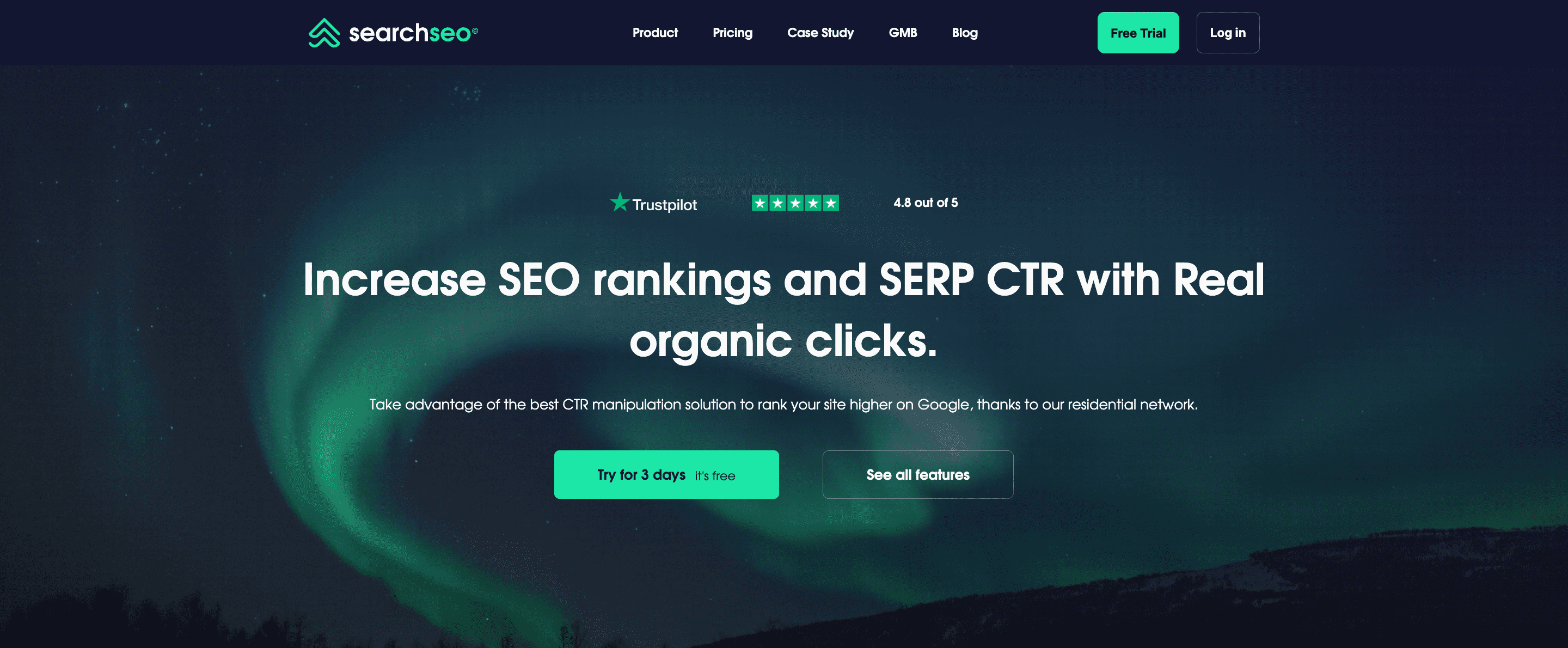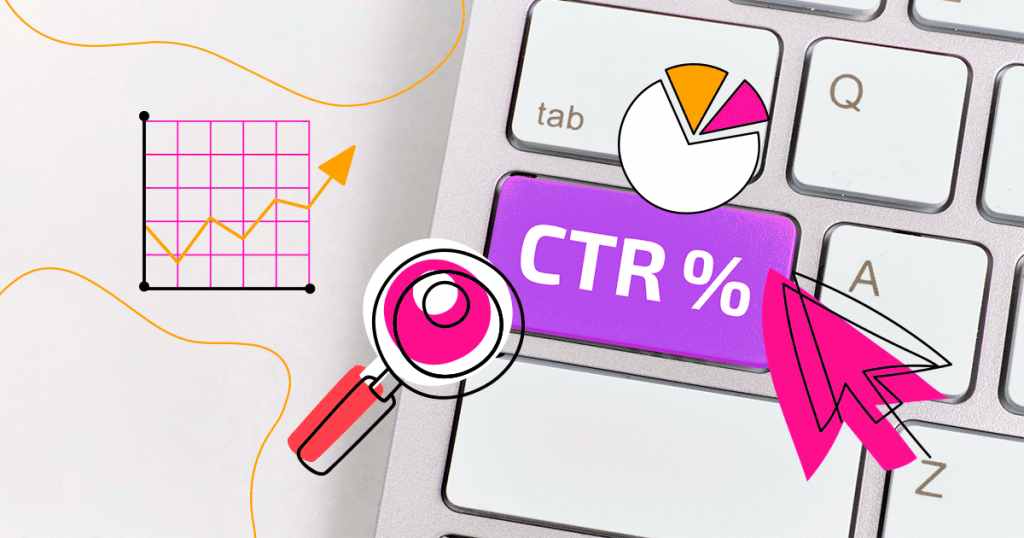Optimize Your Online Effect with LinkDaddy CTR Manipulation Solutions
Optimize Your Online Effect with LinkDaddy CTR Manipulation Solutions
Blog Article
Maximizing Organic Click-Through Fees With CTR Adjustment
The optimization of organic click-through rates (CTR) is a nuanced endeavor that hinges on recognizing both individual psychology and reliable material discussion. The landscape is raging with misunderstandings and oversimplifications concerning what genuinely drives CTR.
Recognizing Click-Through Fees
Comprehending click-through prices (CTR) is essential for examining the efficiency of internet marketing methods. CTR gauges the portion of customers that click on a certain web link or ad contrasted to the overall number of customers who view it. A higher CTR indicates that the material is involving and appropriate to the target market, while a lower CTR may signal a need for optimization.
To calculate CTR, split the number of clicks by the number of perceptions and multiply by 100. As an example, if an ad gets 300 clicks out of 10,000 perceptions, the CTR would certainly be 3%. This statistics is essential for examining numerous components of digital advertising and marketing, including search engine optimization (SEARCH ENGINE OPTIMIZATION), email campaigns, and social networks advertising.
Moreover, analyzing CTR helps online marketers recognize which methods produce the most effective results and which call for improvement. By concentrating on boosting CTR, companies can enhance their content's exposure and effectiveness, resulting in enhanced traffic and prospective conversions. Recognizing the nuances of CTR is fundamental for any kind of marketer intending to maximize their on-line existence and maximize return on financial investment (ROI)

The Psychology of User Behavior
Customer actions is considerably affected by mental factors that determine how people interact with on the internet web content. Recognizing these variables is essential for maximizing click-through rates (CTR) in organic search results page. Cognitive prejudices, such as the anchoring impact, play an essential role fit users' understandings. When customers come across info, their initial impressions can heavily influence their succeeding judgments regarding significance and reliability.
Psychological reactions likewise considerably effect user actions. Web content that resonates mentally can activate a feeling of seriousness or interest, motivating customers to click. Additionally, social proof-- such as customer testimonials or scores-- can boost trust and motivate engagement, as individuals typically seek to the actions of others to educate their own choices.
In addition, the principle of scarcity can drive clicks - CTR Manipulation Press Release. Limited-time deals or exclusive material produce an anxiety of losing out (FOMO), engaging individuals to act rapidly. Comprehending these emotional motorists allows marketing professionals to create more engaging material that resonates with their target audience
Reliable CTR Control Strategies
Leveraging psychological understandings can significantly boost click-through rates (CTR) with targeted control techniques. One of the most reliable methods is the use of compelling headings that stimulate interest or necessity. Phrasing titles as questions or incorporating numbers can attract more attention, motivating individuals to click.
Another strategy involves maximizing meta descriptions to create a feeling of relevance and immediacy. By clearly describing the advantages or options given in the material, you can engage potential visitors and encourage them to click. Additionally, using power words-- such as "exclusive," "verified," or "cost-free"-- can boost the charm of your material.
Aesthetic elements also play a crucial function. Integrating eye-catching pictures or thumbnails can draw users in and improve CTR. A/B screening different visuals can help identify which images resonate finest with your target market.
Finally, making sure that your material assures deliverable value results in greater CTR. They are more most likely to engage when customers view that clicking will provide them with significant understandings or services. By using these methods thoughtfully, marketing experts can effectively adjust CTR to their benefit while preserving moral standards.
Usual Myths Regarding CTR
A number of false impressions surround click-through prices (CTR) that can lead marketers to make misguided choices. While a high CTR suggests that more individuals are clicking, it does not assure conversions or sales.
Another typical idea is that CTR is an isolated metric. Actually, CTR ought to be examined along with various other efficiency indicators, such as bounce price and conversion rate, to gain an all natural sight of project success.
Additionally, some online marketers think that enhancing for CTR alone suffices. Nonetheless, concentrating solely on CTR can result in clickbait strategies that might bring in clicks however stop working to involve individuals meaningfully. This method can hurt brand credibility and lead to lower retention rates
Lastly, there is an idea that CTR methods are globally effective. The reality is that optimum CTR techniques can differ substantially across markets and target market, demanding customized methods for various market sections. Recognizing these misconceptions is vital for establishing efficient CTR strategies that straighten with overarching advertising and marketing goals.
Gauging CTR Success
Although high click-through prices (CTR) can indicate effective involvement with content, determining their real success needs an extensive analysis of a number of variables. Initially, it is vital to comprehend the context in which the CTR is attained. As an example, a high CTR on a misleading title might not equate to significant interaction or conversions, inevitably reflecting poorly on the brand's trustworthiness.
2nd, examining the resource of traffic is important. Organic traffic from online search engine can symbolize a robust web content approach, while clicks from irrelevant sources might indicate an absence of targeting. Furthermore, gauging the subsequent customer habits is crucial; examining metrics such as bounce price, time invested in web page, and conversion rates can supply deeper understandings into the quality of the interaction initiated by the CTR.

Verdict

The optimization of natural click-through prices (CTR) is a nuanced venture that hinges on understanding both individual psychology and effective content discussion. CTR measures the percentage of customers that click on a certain link or promotion contrasted to the total number of customers who watch it. A higher CTR indicates that the web content is involving and relevant to the target audience, while a lower CTR may signify a need for optimization.
Focusing solely on CTR can lead to clickbait methods that may attract clicks however stop working to engage users meaningfully. Furthermore, determining the subsequent individual actions is vital; examining metrics such as bounce rate, time spent on page, and conversion prices can give deeper insights into the top quality of the engagement launched by the CTR.
Report this page